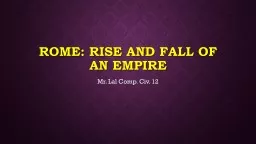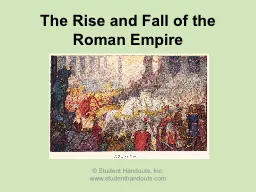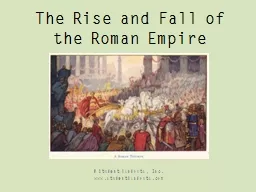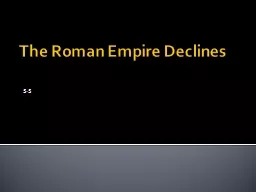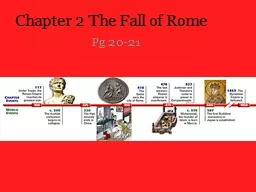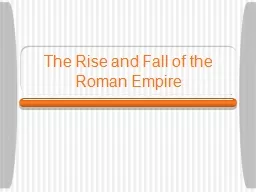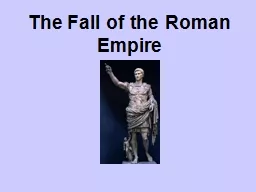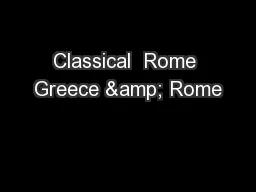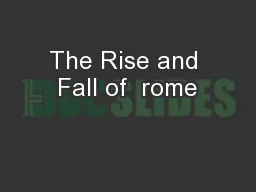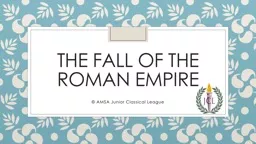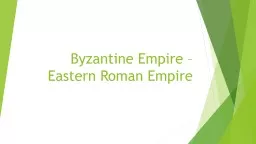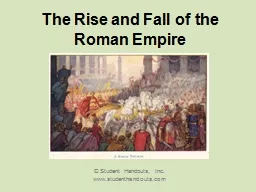PPT-Rome: Rise and Fall of An Empire
Author : briana-ranney | Published Date : 2017-09-04
Mr Lal Comp Civ 12 The Age of Augustus Octavian came to power in 31 BCE Saw disorder and instability in the empire believed that the empire had become too large
Presentation Embed Code
Download Presentation
Download Presentation The PPT/PDF document "Rome: Rise and Fall of An Empire" is the property of its rightful owner. Permission is granted to download and print the materials on this website for personal, non-commercial use only, and to display it on your personal computer provided you do not modify the materials and that you retain all copyright notices contained in the materials. By downloading content from our website, you accept the terms of this agreement.
Rome: Rise and Fall of An Empire: Transcript
Download Rules Of Document
"Rome: Rise and Fall of An Empire"The content belongs to its owner. You may download and print it for personal use, without modification, and keep all copyright notices. By downloading, you agree to these terms.
Related Documents

